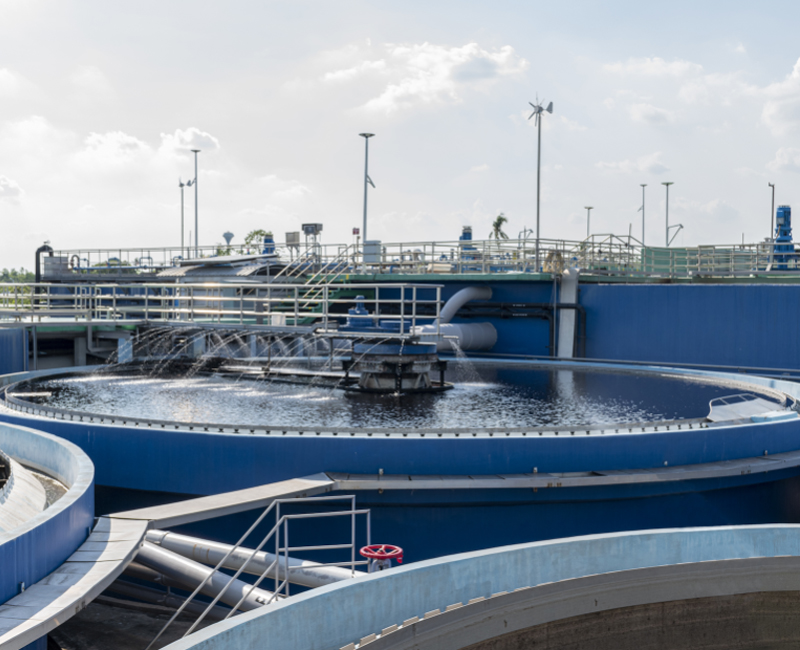Clarifier Tanks
Aguapuro - Clarifier Tanks, Clarifier Tank in wastewater Treatment Plant, Settling Tanks Manufacturer, Supplier in Mumbai, India
Clarifiers are settling tanks built with mechanical means for continuous removal of solids being deposited by sedimentation. A clarifier is generally used to remove solid particulates or suspended solids from liquid for clarification.
Clarifiers work on the principle of gravity settling. The heavier suspended solids settle in the clarifier due to the quiescent conditions provided in the Clarification zone. The settled solids are swept to the centre well provided for collection of sludge with help of moving scraper blades.
Inside the clarifier solid contaminants will settle down to the bottom of the tank where it is collected by a scraper mechanism and removed by another centrally located pipe. The scraper mechanism arms rotate slowly along the clarifier's perimeter and are attached to a centrally located shaft which is powered by a drive system on the clarifier bridge. The removed sludge will either be recycled as RAS (return activated sludge) or wasted as WAS (waste activated sludge). The clarified water instead is released over overflow weirs on the top of the clarifier. In properly functioning clarifiers the overflow water looks already very clear. Fats, oil, grease and other floating substances are removed by a rotating skimmer on the water surface.

